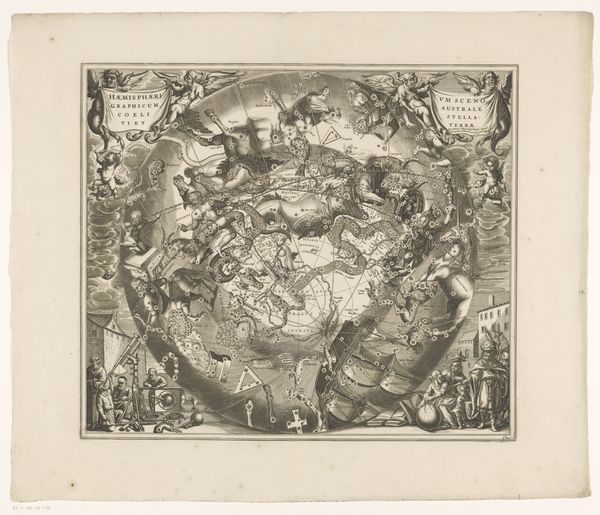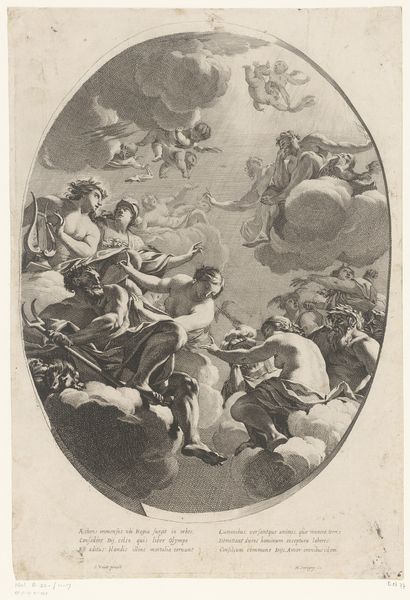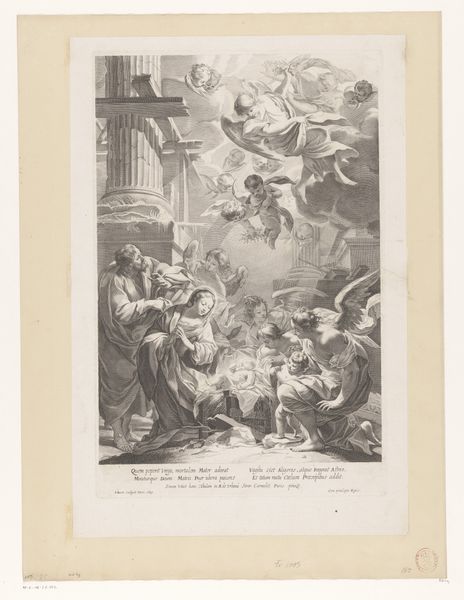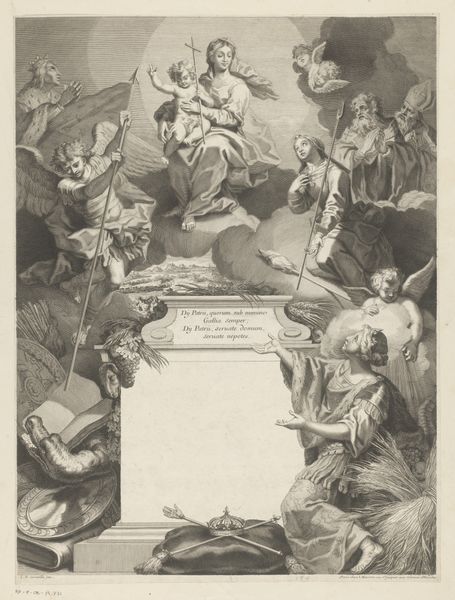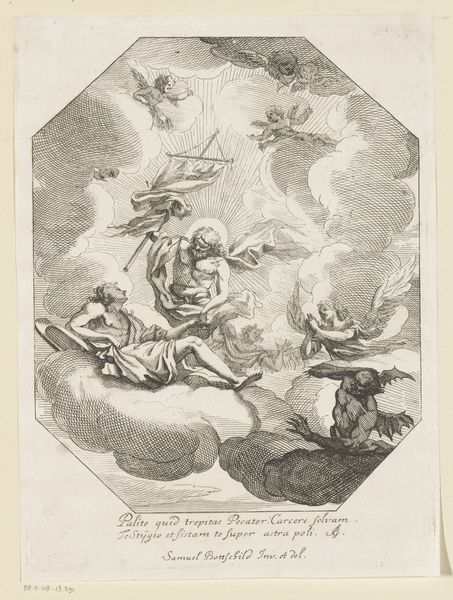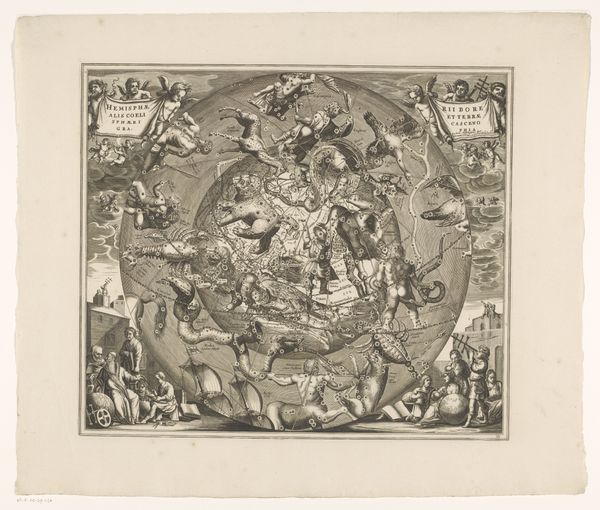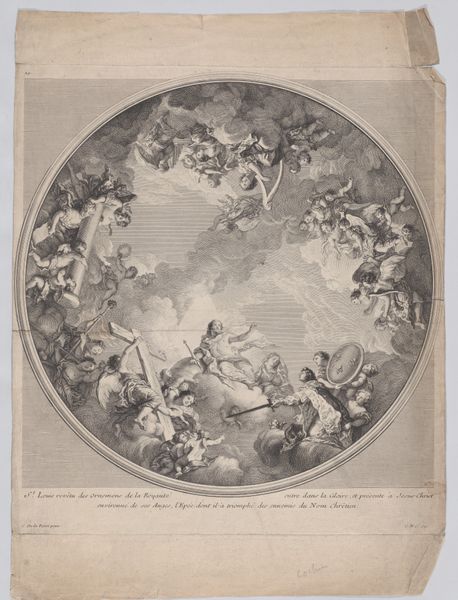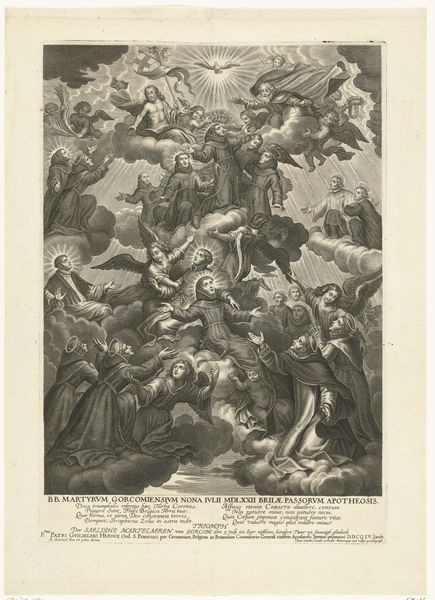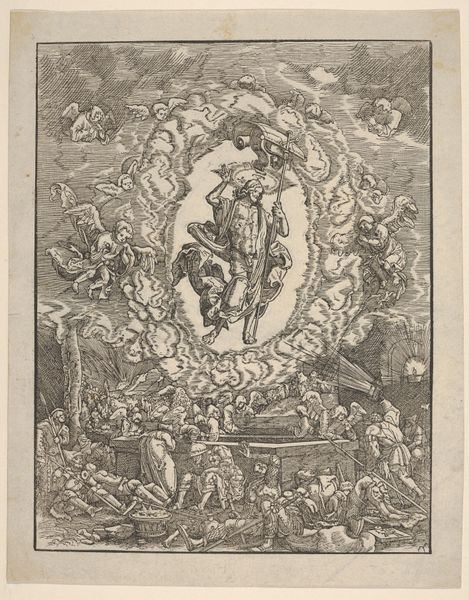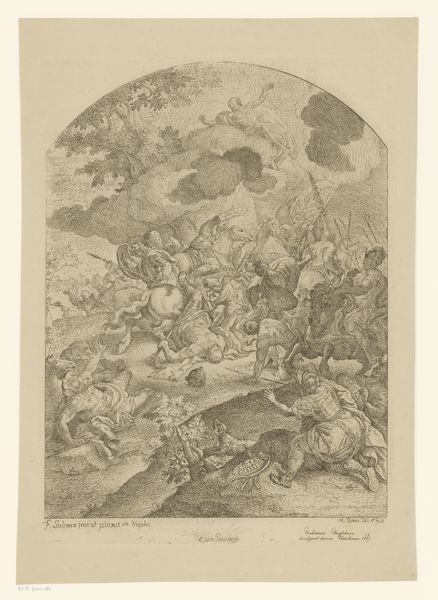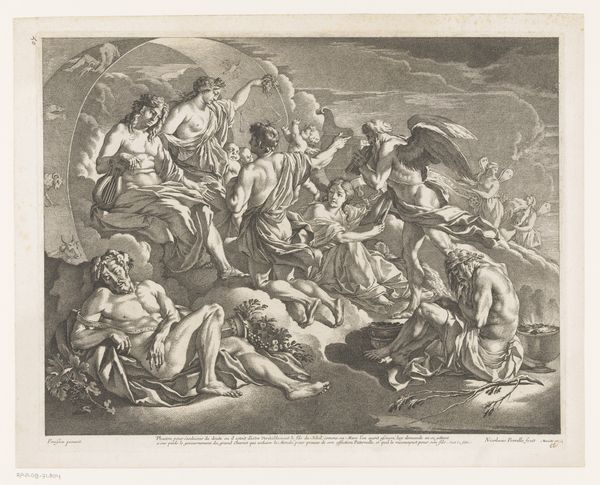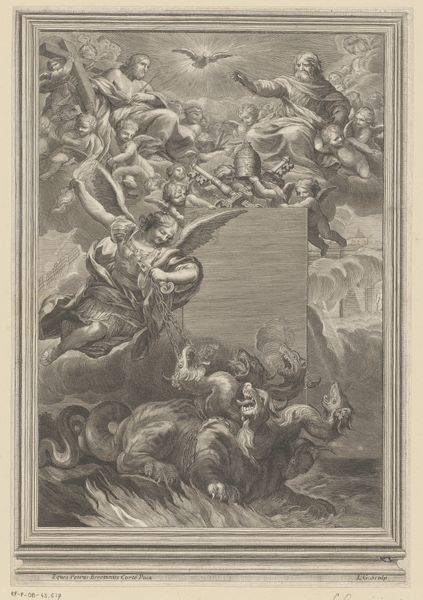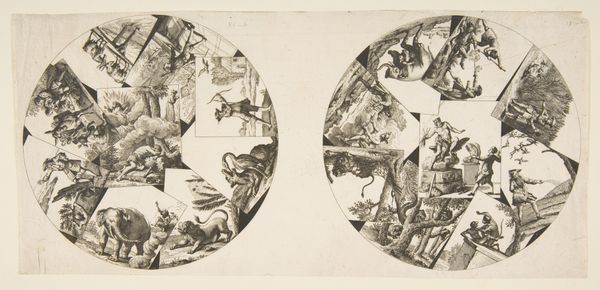
print, engraving
#
allegory
#
baroque
# print
#
figuration
#
history-painting
#
engraving
Dimensions: width 490 mm, height 490 mm
Copyright: Rijks Museum: Open Domain
Editor: This is “Hemelvaart van Maria,” or “Assumption of Mary,” an engraving by Johann Jakob von Sandrart, created sometime between 1665 and 1698. The Baroque drama of it is striking! What stands out to you about this piece? Curator: Immediately, I'm drawn to how Sandrart's engraving reflects the baroque fascination with theatricality and the power of the Church. This print circulated widely, influencing artistic taste and solidifying the Church’s message of divine authority and spiritual reward. Do you see how the upward spiral composition mimics the architectural designs popular in churches at the time? Editor: I do! It’s like the eye is being lifted toward heaven, just like the worshippers would feel in a grand church. How did prints like this shape public perception beyond just aesthetics? Curator: Mass reproduction democratized access to religious imagery. "Hemelvaart van Maria" visually reinforced doctrines of salvation and heavenly reward for a broader audience than ever before. It helped the Church solidify its power and influence through art. Editor: So, it was a tool for ideological dissemination as much as a devotional image? Curator: Precisely. The very act of reproduction, making the image accessible to many, played into a larger social project of reinforcing religious norms. The distribution methods employed shaped not only artistic tastes, but popular piety itself. Who saw the prints and what was its effect? That is an intriguing field. Editor: That makes me see it with new eyes. I came in looking at its artistic style, but now I understand the important historical and cultural purpose that prints like this served at the time. Curator: Exactly! Art doesn't exist in a vacuum; its social role, both intended and unintended, is equally crucial.
Comments
No comments
Be the first to comment and join the conversation on the ultimate creative platform.
